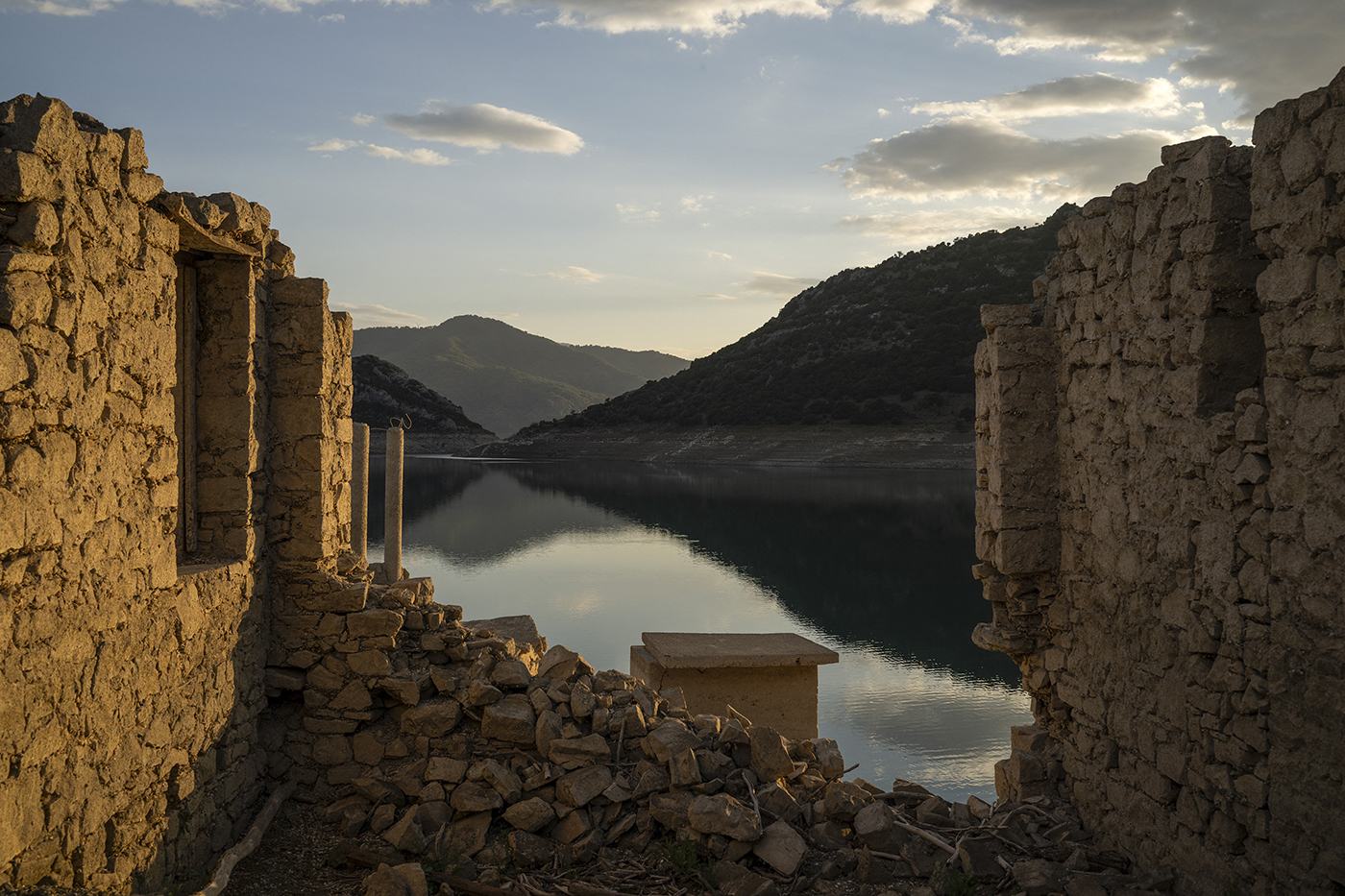After months of unusually high temperatures and drought in multiple parts of Greece, the remains of a sunken village have been exposed in Athens’ main reservoir. For the first time in more than 30 years, the ruins of homes and a school have reappeared as the water levels continue to drop.
The remnants of the village of Kallio are located in an artificial lake that is fed by the Mornos and Evinos rivers. It was submerged during the late 1970’s, when the Mornos dam was built about 124 miles west of Athens. According to the AFP, Kallio village chairman Apostolis Gerodimos told Athens New Agency (ANA) that almost 80 houses were “sacrificed” to supply Athens with water.
[Related: Historic drought brings eerie objects and seawater to the surface of the Mississippi River.]
State water operator EYDAP says that water levels in the lake are currently down roughly 30 percent.
“The level of Lake Mornos has dropped by 40 meters (131 feet),” Yorgos Iosifidis told AFP. Now 67 years old, Iosifidis is one of the people who had to leave his home when the area was flooded. “You see the first floor that remains of my father-in-law’s two-story house…and next to it you can see what’s left of my cousins’ house.”

According to Iosifidis, this is the second time that Kallio has reappeared. In the 1990s, the village was also visible after a similar period of drought.
While Greece is no stranger to heat waves, drought has worsened this year. According to preliminary data from the national observatory, the country saw its mildest winter and hottest July ever recorded. The issue has been compounded by low precipitation in the area. Authorities have called on the roughly 3.7 million inhabitants of the Attica region surrounding Athens to conserve water. Additionally, EYDAP has tapped into other reservoirs near Athens.
Prime Minister Kyriakos Mitsotakis said Greece must improve its water management, while discussing reconstruction works following last year’s destructive floods in neighboring Thessaly. In September 2023, Storm Daniel dumped roughly one year’s rainfall in only a few hours in some areas.
“We don’t have the luxury to waste water… at a time when we know with certainty that we will have less water, we must protect water resources more methodically than we have done so far,” said Prime Minister Mitsotakis.
About 85 percent of Greece’s water is used for irrigation and Prime Minister Mitsotakis also said the country must build more dams.
In 2023, previously submerged ancient rock carvings were visible in parts of Brazil for the first time since 2010 due to a drought. The petroglyphs have depictions of animals and other natural objects and were located on the shores of Rio Negro. This archeological site known as the Ponto das Lajes is near where the Rio Negro and the Solimões river flow into the Amazon River.
[Related: A new solution proposed for drought-stricken Panama Canal goes around it.]
In 2022, Europe saw its worst drought in at least 500 years, with rivers across the continent seeing low water levels. Several World War II era warships were uncovered in the Serbian portion of Europe’s Danube River. A circle of dozens of megalithic stones dating back to 5,000 BCE was exposed in a corner of the Valdecanas reservoir in Spain.
Haunting “hunger stones”also turned up across Europe that summer, with markings that showed the water levels from other previously dry times. Some of these stones came with grim warnings, including one found in the Elbe. The stone near the town of Děčín in the northern Czech Republic, read “If you see me, then weep.”

